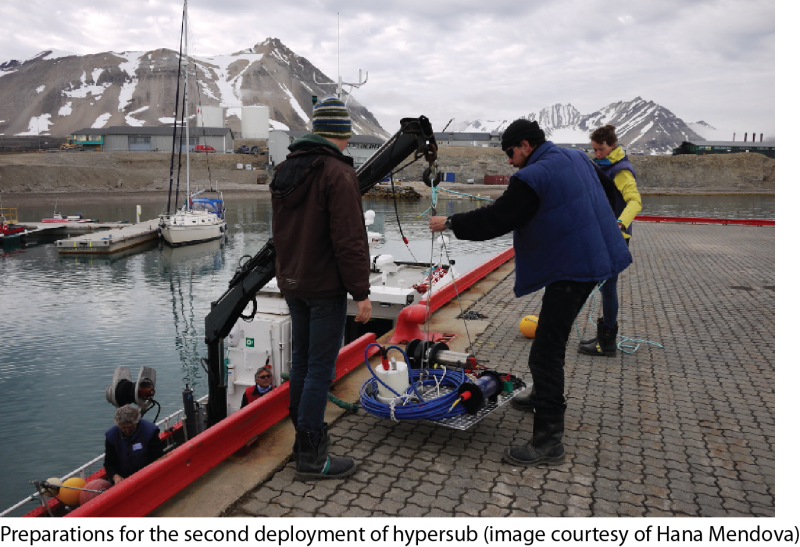If at first you don't succeed.....
Aug 2015, Arjun Chennu
After months of preparation and careful execution, our dear hypersub system deployed in the Arctic coast was damaged by an iceberg (see previous article). We lost the chance to have our measurements continue into the winter, and perhaps also some of the instrumentation. Ok, icebergs can be hard opponents. Luckily, in our case we have the chance to try again. After our initial report of the damage, Dr. Carla Sands got permission from the SenseOCEAN project officer to extend the time line of our project participation. While it may be too late for “If at first you don't succeed, hide all evidence that you ever tried”, we are instead going for a different sort of retrial.
Last month, my colleague Dr. Hana Medova from MPI Bremen visited Ny-Ålesund. Working with the AWI diving team led by Prof. Philipp Fischer, they recovered (or salvaged?) the hypersub system from the seafloor. Without regular movement of the motorized sledge to counter it, I'm told the system was a big clump of algae on the sea-floor. However, apart from picking things up we also left something behind.

We prepared a new system for deployment, but this time only consisting of a remotely-operable FRR fluorometer. Our SenseOcean partner Chelsea Technology Group (CTG) had kindly provided an instrument that we could use to replace the compromised one. Building upon this chance, we added a rotating dark chamber to the optical face of the instrument (See video). This should allow us to make measurements of the photosynthetic activity of phytoplankton at both ambient light, as well as dark adapted conditions. By measuring the fluorescent response at both these conditions, we should be able to estimate the gross photosynthetic production using methods developed by Dr. Kevin Oxborough, who is a principal scientist at CTG.
Back at Ny-Ålesund, this time in the bright Arctic summer, the FRRF and connecting electronics were re-assembled and plugged in to the underwater node. This time around, due to the small footprint of the instrument, we attached it to a concrete block next to other instruments. One of these instruments has a webcam that can provide a visual on our FRRf. So now, we have a spy to keep tabs on our spy. We will be watching the data stream closely, and hope to collect a unique long-term dataset of Arctic photosynthesis.













